Who Eats What?
Many birds use our gardens throughout the year for supplementary year-round feeding. It is, however, when food is at its shortest that birds will use our gardens most. Here is a rough guide as to what some of our most common garden visitors enjoy the most. As a general rule the more varieties of food you offer the more species you are likely to attract into your garden.
Many birds use our gardens throughout the year for supplementary year-round feeding. It is, however, when food is at its shortest that birds will use our gardens most. Here is a rough guide as to what some of our most common garden visitors enjoy the most. As a general rule the more varieties of food you offer the more species you are likely to attract into your garden
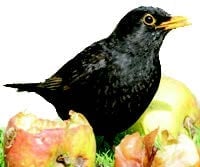 Blackbird
BlackbirdThe male of the species is jet black with a bright yellow beak, though the beak colour is browner on younger birds. The female bird is similar in size but its plumage is brown in colour.
Feed from a ground feeder
Sunflower Hearts
Ground Mix
Robin and Friends Mix
Chopped Peanuts
Sultanas
Rolled Oats
Suet
Live Mealworms
Ground Mix
Robin and Friends Mix
Chopped Peanuts
Sultanas
Rolled Oats
Suet
Live Mealworms
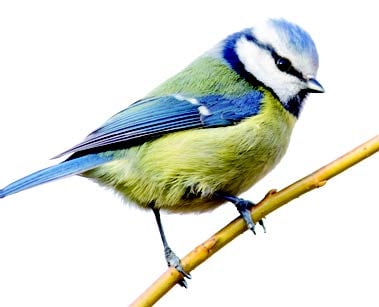 Blue Tit
Blue TitThis small member of the Tit family is brightly coloured, mainly yellow with a blue cap and wings. One of the most common visitors in our gardens.
Feed from a hanging feeder
Sunflower Hearts
Ultimate Mixes
Mixed Seed
Premium Mixes
Black Sunflower Seeds
Peanuts
Suet
Live Mealworms
Ultimate Mixes
Mixed Seed
Premium Mixes
Black Sunflower Seeds
Peanuts
Suet
Live Mealworms
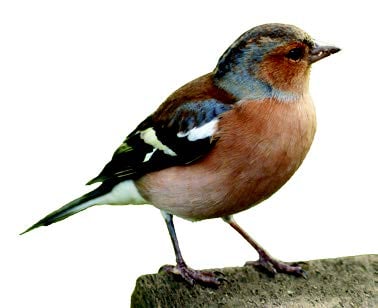 Chaffinch
ChaffinchThe most colourful of the finch family. The male Chaffinch has a pink breast and cheeks, blue-grey crown and nape, and chestnut brown back. The female has an olive-brown back, and grey-brown under parts becoming almost white towards the rump, which is greenish. The juveniles are similar to the female but lack the greenish rump.
Feed from a ground or hanging feeder
Sunflower Hearts
Premium Mixes
Ultimate Mixes
Black Sunflower Seeds
Peanuts
Mixed Seed
Ground Mix
Premium Mixes
Ultimate Mixes
Black Sunflower Seeds
Peanuts
Mixed Seed
Ground Mix
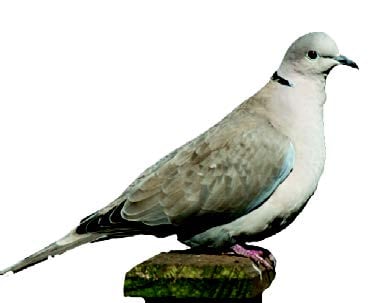 Collared Dove
Collared DoveThe delicately coloured plumage of the collared dove is a blend of pinkish-sandy browns and greys. Both male and female birds have the black half collar finely outlined with white around the nape of the neck. The young do not develop their collar until after their first moult.
Feed from a ground feeder
Sunflower Hearts
Premium Mixes
Ultimate Mixes
Black Sunflower Seeds
Peanuts
Mixed Seed
Ground Mix
Premium Mixes
Ultimate Mixes
Black Sunflower Seeds
Peanuts
Mixed Seed
Ground Mix
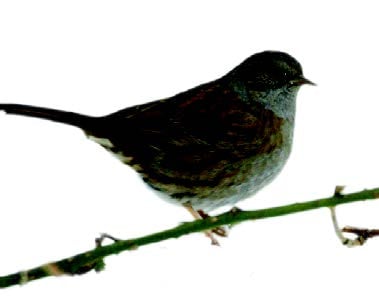 Dunnock
DunnockBoth male and female are alike in their grey colour but the younger birds tend to be more brown and striped. They can also be identified by their thin bill and orange legs.
Feed from a ground feeder
Chopped Peanuts
Ground Mix
Mixed Seed
Ultimate Mixes
Premium Mixes
Oats
Live Mealworms
Suet
Ground Mix
Mixed Seed
Ultimate Mixes
Premium Mixes
Oats
Live Mealworms
Suet
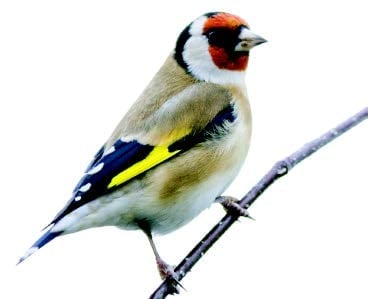 Goldfinch
GoldfinchThese small birds are highly decorated in colour. Their bodies are fawn in colour, their wings are black and white with a flash of yellow and their heads are a vibrant red with flashes of black and white. They have a long beak which enables them to extract seeds from the teasel and thistles, or niger seed in special feeders
Feed from a hanging feeder
Niger Seed
Sunflower Hearts
Black Sunflower Seeds
Ultimate Mixes
Premium Mixes
Sunflower Hearts
Black Sunflower Seeds
Ultimate Mixes
Premium Mixes
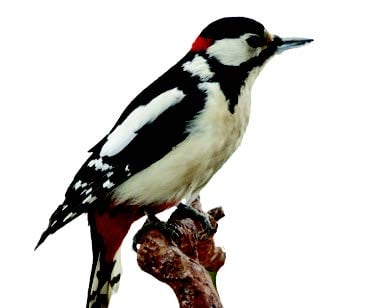 Great Spotted Woodpecker
Great Spotted WoodpeckerA very distinctive brightly coloured bird with black and white features with a red patch under the tail. The male has a red patch at the back of his head, while the female has a black nape. Younger birds have a red skull cap.
Feed from a hanging feeder
Sunflower Hearts
Peanuts
Suet
Peanuts
Suet
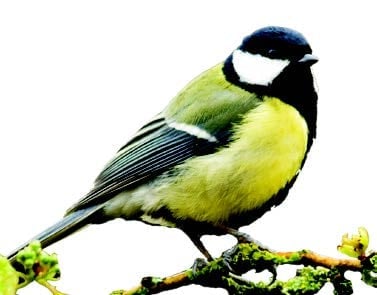 Great Tit
Great TitThe largest member of the tit family, it is easily recognised by its black head and black breast stripe, bright yellow belly and green upper body. The male has a thicker breast stripe than the female.
Feed from a hanging feeder
Sunflower Hearts
Suet
Ultimate Mixes
Black Sunflower Seeds
Peanuts
Live Mealworms
Suet
Ultimate Mixes
Black Sunflower Seeds
Peanuts
Live Mealworms
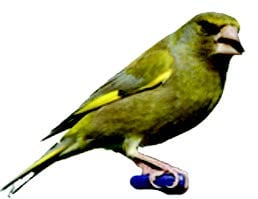 Greenfinch
GreenfinchSimilar in size to a House Sparrow, the Greenfinch is a chunky-looking finch. The male Greenfinch is known for its olive-green back and bright yellow patches in its wings and tail. The female is duller with streaky upper parts. Juvenile Greenfinches are similar to the female but browner.
Feed from a ground or hanging feeder
Mixed Seed
Premium Mixes
Ultimate Mixes
Black Sunflower Seeds
Sunflower Hearts
Peanuts
Premium Mixes
Ultimate Mixes
Black Sunflower Seeds
Sunflower Hearts
Peanuts
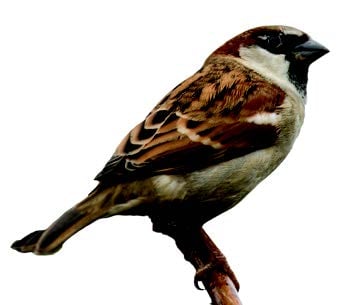 House Sparrow
House SparrowThe male House Sparrow has a black bib with grey cheeks, crown and rump. The female is more uniformly brown with a paler front. Juveniles resemble the female.
Feed from a ground or hanging feeder
Sunflower Hearts
Mixed Seed
Premium Mixes
Ultimate Mixes
Ground Mix
Black Sunflower Seeds
Wheat
Live Mealworms
Mixed Seed
Premium Mixes
Ultimate Mixes
Ground Mix
Black Sunflower Seeds
Wheat
Live Mealworms
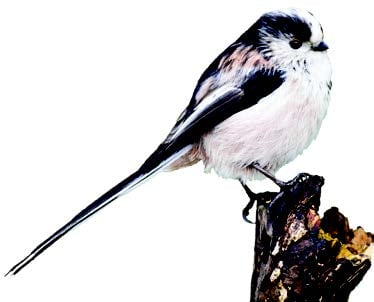 Long Tailed Tit
Long Tailed TitThe Long-tailed Tit is easily recognised as its tail is longer than its body. They have small bodies of what looks like black and white plumage but on closer inspection they are pinkish and their long tail is black in colour. They have a very small beak which is black.
Feed from a hanging feeder
Sunflower Hearts
Suet
Peanuts
Live Mealworms
Suet
Peanuts
Live Mealworms
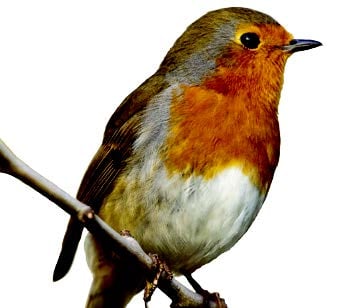 Robin
RobinOne of the most distinctive birds seen in Britain and certainly the best loved. Both male and female birds are identical with their red breast and olive brown upper parts. Juveniles have a speckled breast instead of the red.
Feed from a ground feeder
Sunflower Hearts
Ultimate Mixes
Ground Mix
Robin and Friends Mix
Sultanas
Oats
Suet
Live Mealworms
Ultimate Mixes
Ground Mix
Robin and Friends Mix
Sultanas
Oats
Suet
Live Mealworms
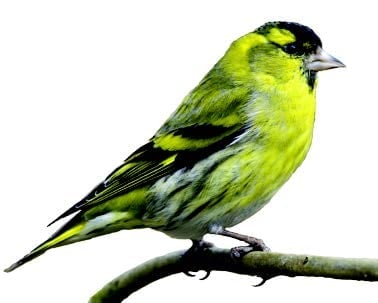 Siskin
SiskinBoth male and female have broad yellow wing bars and the male has a black cap and bib during the summer months. The female is brown and streaky to keep her hidden when on the nest. A small finch which is increasing in numbers across the UK, and is now a regular visitor to many gardens.
Feed from a ground or hanging feeder
Sunflower Hearts
Niger Seed
Mixed Seed
Ultimate Mixes
Premium Mixes
Black Sunflower Seeds
Peanuts
Niger Seed
Mixed Seed
Ultimate Mixes
Premium Mixes
Black Sunflower Seeds
Peanuts
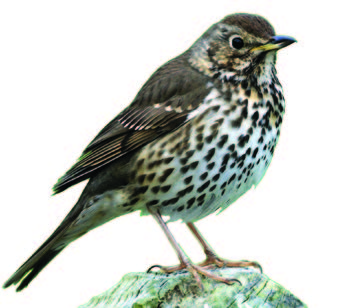 Song Thrush
Song ThrushA fairly common bird of gardens, parks and woodland, the Song Thrush’s nut brown upper plumage and speckled breast are perfectly designed to hide the bird whilst on the nest and when feeding on the ground.
Feed from a ground feeder
Ground Mix
Robin and Friends Mix
Sunflower Hearts
Chopped Peanuts
Live Mealworms
Robin and Friends Mix
Sunflower Hearts
Chopped Peanuts
Live Mealworms
 Starling
StarlingThe plumage is shiny black with white speckles during winter, revealing purple and greens glints in the summer sunshine. The young are grey-brown until their first moult.
Feed from a ground or hanging feeder
Ground Mix
Robin and Friends Mix
Sultanas
Suet
Live Mealworms
Robin and Friends Mix
Sultanas
Suet
Live Mealworms
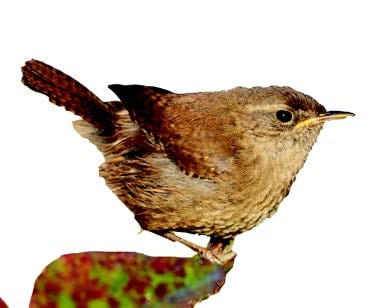 Wren
WrenThis tiny bird has mottled brown plumage, characterised by its cocked tail and very small neck. It is a small dumpy bird with long legs and toes, but with a very loud song!
Feed from a ground feeder
Dried Mealworms
Live Mealworms
Suet
Chopped Peanuts
Live Mealworms
Suet
Chopped Peanuts
